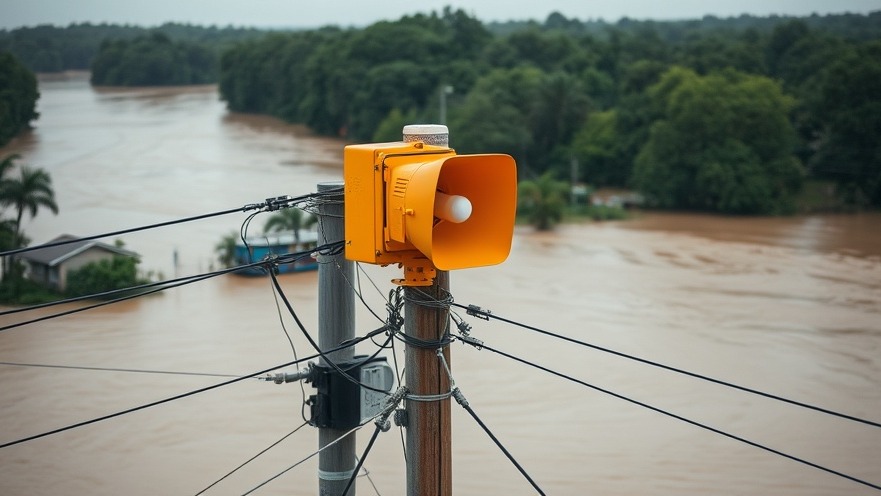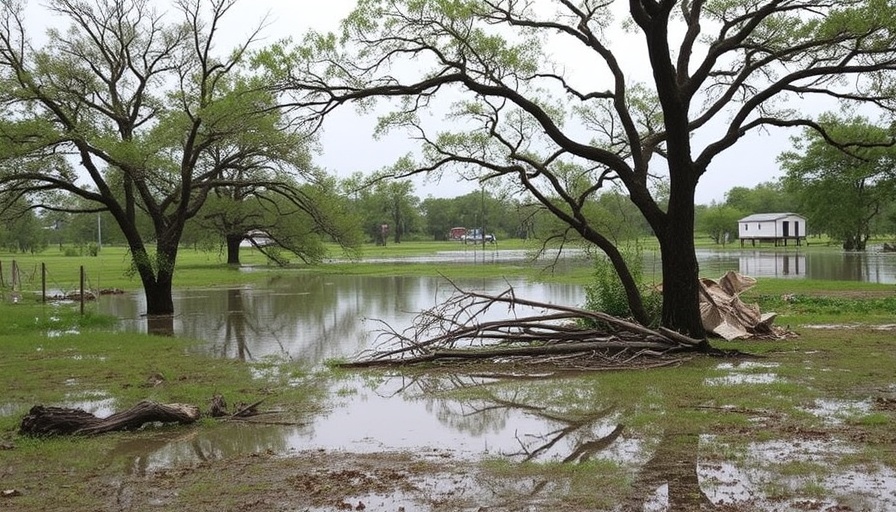
Flood Safety Measures: Why the Ban on Waterway Use Matters
The City of Austin has implemented an immediate ban on all uses of its waterways due to severe weather conditions. The decision, effective until noon on July 7, 2025, comes as significant rainfall has caused swift currents and hazardous debris accumulation in local creeks and lakes. The ban applies to all types of watercraft, including personal and commercial vessels, as well as recreational activities like kayaking and paddleboarding. With storm forecasts predicting additional rainfall, safety is the utmost priority for both residents and visitors.
Understanding the Immediate Threat: Rainfall and Flash Flooding
In recent days, Austin has experienced two to four inches of rainfall, with forecasts suggesting another two inches may follow. This extreme weather not only poses a risk of flash flooding but also elevates the dangers associated with navigating local waters. It is crucial for the community to understand the serious nature of these alerts. Flash floods can lead to water levels rising precipitously, endangering the safety of those near the banks of rivers and lakes.
The Legal Framework Behind Waterway Restrictions
This prohibition falls under City Code Section 8-5-21, allowing the Fire Chief to issue directives to ensure public safety during potential flooding situations. This legal framework enables swift response and emphasizes the importance of adhering to governmental advisories during extreme weather events.
The Broader Implications: A Seasonal Perspective on Flooding in Austin
This incident is not merely a standalone event; it signifies a growing trend of violent weather patterns affecting the Austin area. Traditionally, rainy seasons can lead to increased flooding risks, particularly in urban settings where waterways may have been altered to accommodate expanding infrastructure. Awareness and responsiveness to these changes are vital for community safety and disaster preparedness.
Community Response: Moving to Higher Ground
In light of these waterway restrictions, local authorities urge residents near rivers to move to higher ground. Understanding where to seek refuge during emergencies is essential. It prompts discussions about community preparedness and local resources available to help individuals and families during weather-related crises.
Potential Risks of Ignoring Warnings
When individuals disregard warnings against waterway use, they not only place themselves at risk but also strain local emergency services. Flash floods have a history of leading to tragic outcomes. Therefore, taking these warnings seriously can be a matter of life and death.
Looking Ahead: How Can Austin Prepare for Future Flood Risks?
As Austin continues grappling with the consequences of extreme weather, it prompts pivotal discussions about urban planning, emergency preparedness, and community resilience in the face of climate change. Implementing sustainable urban development practices that consider potential flooding can mitigate some risks associated with heavy rainfall. Engaging in community dialogues about disaster readiness will be essential to foster a proactive response to future challenges.
Call to Action: Stay Informed and Prepared
As this situation unfolds, it is crucial for residents to stay informed through reliable news sources such as Austin’s local news outlets. Engaging with community preparedness initiatives and participating in local discussions can significantly improve how the community navigates these crises and enhances public safety.
 Add Element
Add Element  Add Row
Add Row 



 Add Row
Add Row  Add
Add 


Write A Comment